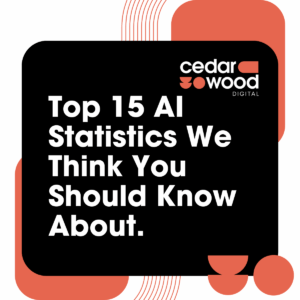Artificial Intelligence (AI) refers to technologies that enable machines to perform tasks that typically require human intelligence, such as learning, problem-solving, data analysis, and decision-making.
For companies, understanding AI is crucial because it can significantly enhance efficiency, reduce costs, and improve customer experiences. From automating repetitive tasks to uncovering insights through data analysis, AI helps businesses operate smarter and faster. As AI continues to evolve and shape industries, companies that adopt and understand it will be better positioned to innovate, stay competitive, and meet growing customer expectations.
- AI Adoption in the Workplace: A Sharper Contrast Between Public and Professional Use (Celonis).

Out of more than 4,000 poll respondents, a combined 68% said they were using AI at work, with 28% using it extensively and 40% using it occasionally. Just 17% indicated they rarely used AI, while only 15% said they hadn’t used it at all in their professional roles.
This growing gap between general awareness and actual workplace usage underscores a key trend: professionals who are tuned into AI’s capabilities are integrating it far more actively than the broader public, especially within business and tech-savvy communities.
2. Primary use for AI in the workplace (Celonis).

Productivity is the most common use of AI at work, with 48% of users citing it as their top application, far ahead of content creation (26%) and data analysis (23%).
Real-world examples and research support these findings. At Carrefour, AI tools like ChatGPT are saving significant time on tasks like quote comparison and meeting minutes. Similarly, a study by MIT and Stanford found that customer service agents using a generative AI assistant were 14% more productive and experienced improved customer satisfaction and retention.
Together, these insights show that AI is becoming a powerful tool for enhancing workplace efficiency and outcomes.
3. Process intelligence empowers AI to understand and operate within your business context (Celonis).
Poll results and recent research clearly show the business world’s growing interest in AI. With the rapid rise of generative AI, what was once considered futuristic is now a practical tool. However, successfully implementing AI in an enterprise setting isn’t straightforward, it requires more than just technology.
AI must understand the unique workflows and dynamics of a business to deliver real value. That’s where process intelligence comes in.
Celonis’ Process Intelligence Graph integrates data from systems like ERP, CRM, and SCM with standardized process models and AI. This creates a unified framework that helps AI “speak the language” of your organization.
4. According to the UK Government, the country’s AI market exceeded £72 billion in value in 2024.
The UK Government reported that the country’s artificial intelligence (AI) market grew to over £72 billion in 2024, marking a major milestone for the industry. This figure reflects the growing investment, adoption, and development of AI technologies across sectors, from finance and healthcare to retail and manufacturing.
The size of the market highlights just how rapidly AI is becoming a key driver of economic growth in the UK. It’s not just about automation or efficiency, AI is now playing a central role in innovation, helping businesses make smarter decisions, improve customer experiences, and stay competitive in a digital-first world.
With this momentum, the UK is positioning itself as a global leader in AI, and the opportunities for businesses to leverage this technology are only expanding.
5. The US International Trade Administration projects that the UK’s AI market will reach £1 trillion by 2035 (Forbes) .
According to forecasts from the US International Trade Administration, the UK’s AI market is expected to grow exponentially, reaching an estimated £1 trillion in value by 2035. This ambitious projection reflects the increasing pace of AI adoption across industries and the UK’s commitment to becoming a global leader in AI innovation.
From healthcare and finance to logistics and retail, AI is rapidly transforming how businesses operate, streamlining processes, enhancing decision-making, and unlocking new revenue streams. This trillion-pound projection suggests that AI won’t just be a supporting tool, but a central pillar of the UK economy within the next decade.
For businesses and professionals, this highlights a clear opportunity: those who invest in AI now will be better positioned to lead in the economy of tomorrow.
6. At least one AI technology has been adopted by 68% of large enterprises, 33% of mid-sized firms, and 15% of small businesses (Forbes).
This trend isn’t surprising; larger companies often have more resources, infrastructure, and technical expertise to explore and integrate AI. They’re also under greater pressure to innovate at scale, which makes AI a natural fit for improving efficiency, customer experience, and data-driven decision-making.
Smaller businesses, on the other hand, may face more barriers such as limited budgets, lack of in-house skills, or uncertainty around where AI fits into their operations. However, as tools become more accessible and affordable, we can expect adoption to increase across all business sizes in the coming years.
7. In 2023, AI added £5.8 billion to the UK economy.
This contribution comes from a wide range of industries, from healthcare and finance to retail and logistics, where AI is being used to streamline operations, enhance decision-making, and unlock new revenue opportunities. Whether it’s automating repetitive tasks or powering advanced data analysis, AI is helping businesses work smarter and faster.
As adoption continues to rise, especially with the rapid advancement of generative AI tools, AI’s economic footprint is only expected to grow in the years ahead, making it a key pillar of the UK’s digital future.
8. According to research by Forbes Advisor, 59% of UK residents express concerns about the use of artificial intelligence.

9. The U.S. remains the leader in developing top AI models, but China is rapidly narrowing the performance gap (Stanford University).

10. AI is becoming more efficient, affordable and accessible (Stanford University).

Thanks to more efficient smaller models, the cost of running a system with GPT-3.5-level performance has plummeted by more than 280 times from November 2022 to October 2024. On the hardware side, expenses have dropped around 30% every year, while energy efficiency has increased by 40% annually. Meanwhile, open-weight models are catching up to closed models, shrinking the performance gap from 8% to only 1.7% on certain benchmarks within just one year. These combined advancements are quickly making cutting-edge AI more accessible than ever before.
11. Governments are intensifying their focus on AI through increased regulation and investment (Stanford University).
In 2024, U.S. federal agencies rolled out 59 AI-related regulations, more than twice the number introduced in 2023, and these were issued by twice as many agencies. Globally, references to AI in legislation increased by 21.3% across 75 countries since 2023, reflecting a ninefold rise since 2016. Along with this heightened focus, governments are making substantial investments: Canada committed $2.4 billion, China launched a $47.5 billion semiconductor fund, France pledged €109 billion, India allocated $1.25 billion, and Saudi Arabia unveiled Project Transcendence, a $100 billion initiative.
12. Netflix makes $1 billion annually from automated personalised recommendations (Exploding Topics).
When you open Netflix, the movies and shows you see aren’t random; they’re carefully selected by powerful algorithms that analyse your watching habits, preferences, and even what people with similar tastes enjoy. These smart recommendations keep you hooked, making it easier to find something you love without endless searching. By helping viewers discover new content they’re likely to enjoy, Netflix boosts user engagement and keeps subscribers coming back, turning personalised suggestions into a huge source of revenue.
13. 38% of medical providers use computers as part of their diagnosis (Exploding Topics).
Around 38% of medical providers now use computers to help with diagnosing patients. This means that more than one-third of doctors and healthcare professionals rely on technology, like AI-powered tools, software, and data analysis, to assist them in identifying illnesses and conditions. These computer systems can quickly analyse medical records, symptoms, and test results to provide doctors with valuable insights, helping them make more accurate and faster decisions. Using technology in diagnosis is becoming an important part of modern healthcare, improving patient outcomes and supporting doctors in delivering better care.
14. It is estimated that there are over 8 billion voice assistants currently in use (BusinessWire)
Voice assistants like Siri, Alexa, Google Assistant, and others have become a part of everyday life for millions of people. Whether it’s setting reminders, playing music, answering questions, or controlling smart home devices, these AI-powered helpers make it easier to get things done just by using your voice. The widespread use of voice assistants shows how quickly technology is becoming integrated into our daily routines, making life more convenient and connected.
15. Only 8.5% of people believe they can “always trust” AI Overviews when searching online (Exploding Topics)
Research by Exploding Topics revealed widespread doubts about Google’s AI Overviews feature. Interestingly, just 8% of users consistently click through to review the original source material.

